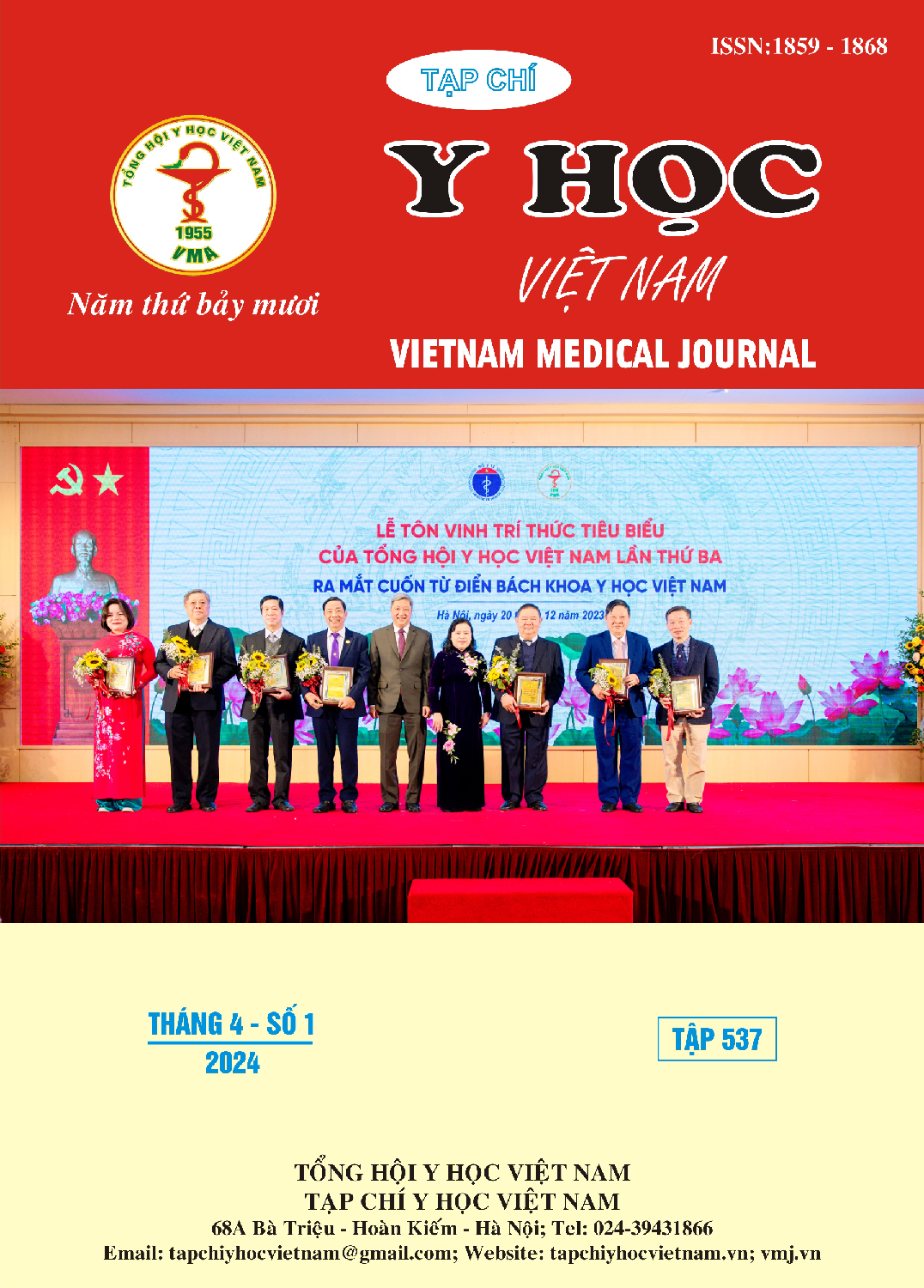RESULTS OF MINIMALLY INVASIVE SCREW FIXATION TREATMENT OF DISTAL TIBIA FRACTURES AT HAI DUONG PROVINCE GENERAL HOSPITAL
Main Article Content
Abstract
Objective: Evaluate the results of Minimally Invasive Plate Osteosynthesis to treat distal third tibial fractures at Hai Duong General Hospital. Subjects and methods: A cross-sectional descriptive study on 46 patients with distal third tibial fractures treated with Minimally Invasive Plate Osteosynthesis at Hai Duong General Hospital from January 2019 to January 2023. Results: The age group 30-50 accounted for the highest proportion with 55.2%. 73.9% of patients are men. The rate of closed fractures is 76.1%, and grade 1 open fractures is 23.9%. Grade A2 fractures account for the highest rate of 43.5%, grade A1 fractures account for 34.8% and grade A3 fractures account for 21.7% (AO grade). The average hospital stay was 6 ± 4.7 days. The postoperative infection rate is 10.9%. The majority of cases are corrected well or very well at a rate of 82.6%. Correction at an average level accounts for 17.4%. Bone healing results were excellent and good, accounting for 89.1%, and bone healing results were average, accounting for 10.9%. Regarding the rehabilitation results according to AOFAS, the good and very good categories account for a high percentage of 82.6%, the average category accounts for a small percentage of 17.4%, and there are no poor evaluation results. Conclusion: Minimally Invasive Plate Osteosynthesis is an effective option in treating distal third tibial fractures. The method can be applied to complex fracture cases with good results.
Article Details
Keywords
Minimally Invasive Plate Osteosynthesis, distal third tibial fractures, Hai Duong General Hospital
References
2. Huỳnh Ngọc Phúc (2020). Kết quả điều trị gãy xương cẳng chân bằng nẹp nhựa PTB. Luận văn chuyên khoa cấp II: Trường Đại học Y dược Thành phố Hồ Chí Minh.
3. Nguyễn Văn Trường (2012), Ðánh giá kết quả điều trị gãy hở đầu xa hai xương cẳng chân bằng cố định ngoài tại bệnh viện hữu nghị Việt Ðức, Luận văn thạc sĩ Y học. :Đại học Y Hà Nội.
4. Lau TW, Leung F, Chan CF, Chow SP. Wound complication of minimally invasive plate osteosynthesis in distal tibia fractures. Int Orthop. 2008; 32(5):697-703.doi:10.1007/s00264-007-0384-z
5. Hoàng Thanh Hà (2013),” Ðiều trị gãy đầu dưới xương chày bằng nẹp vít, phẫu thuật ít xâm lấn”, Tạp chí Hội nghị thường niên lần XX Hội CTCH Thành phố Hồ Chí Minh. :tr. 81-83.
6. Zelle BA, Dang KH, Ornell SS. High-energy tibial pilon fractures: an instructional review. Int Orthop. 2019; 43(8): 1939-1950. doi: 10.1007/ s00264-019-04344-8
7. Trần Hoàng Tùng (2006), Ðiều trị kết hợp xương nẹp vít gãy kín hai xương cẳng chân bằng kĩ thuật ít xâm lấn, Luận văn tốt nghiệp bác sĩ nội trú. :Đại học Y Hà Nội.
8. Ronga M, Longo UG, Maffulli N. Minimally Invasive Locked Plating of Distal Tibia Fractures is Safe and Effective. Clin Orthop. 2010;468(4):975-982. doi:10.1007/s11999-009-0991-7


